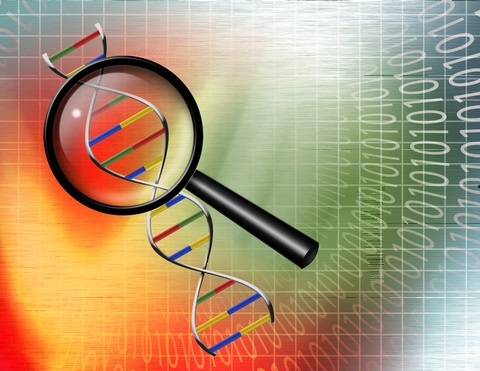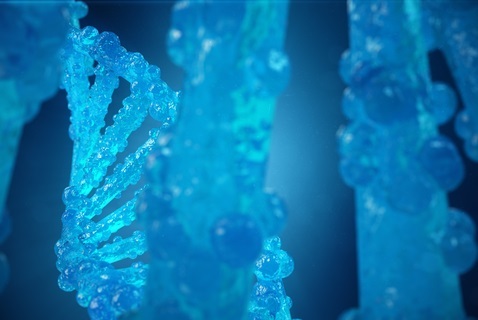
 Data Structure
Data Structure Networking
Networking RDBMS
RDBMS Operating System
Operating System Java
Java MS Excel
MS Excel iOS
iOS HTML
HTML CSS
CSS Android
Android Python
Python C Programming
C Programming C++
C++ C#
C# MongoDB
MongoDB MySQL
MySQL Javascript
Javascript PHP
PHP
- Selected Reading
- UPSC IAS Exams Notes
- Developer's Best Practices
- Questions and Answers
- Effective Resume Writing
- HR Interview Questions
- Computer Glossary
- Who is Who
Genetic and Physical Maps the Relation Between Them
Introduction
Genetic maps and physical maps are two types of maps that help us understand the structure of the genome. The genome is the complete set of genetic instructions that an organism inherits from its parents. Genetic maps and physical maps provide different types of information about the genome, but they are related in important ways.
Genetic Maps
Genetic maps are maps of the relative positions of genes on a chromosome. Genes are segments of DNA that carry the instructions for making a particular protein. Genetic maps are constructed by analysing the patterns of inheritance of different genetic traits. If two genes are located close to each other on a chromosome, they are more likely to be inherited together. If two genes are located far apart on a chromosome, they are more likely to be inherited independently.
Genetic maps are typically measured in centimorgans (cM). One cM is defined as the distance between two genes that are inherited together 1% of the time. Genetic maps are useful for studying the inheritance of traits, identifying the locations of disease-causing genes, and understanding the evolution of genomes.

Physical Maps
Physical maps are maps of the actual physical locations of DNA segments on a chromosome. Physical maps are constructed by analysing the sizes of DNA segments and the locations of landmarks on the chromosome.
Physical maps are typically measured in base pairs (bp), which is the number of nucleotides (A, T, C, G) in a DNA segment.
Physical maps are useful for studying the structure of genomes, identifying the locations of specific genes, and comparing the genomes of different organisms.
Physical maps can also be used to identify regions of the genome that are prone to structural changes, such as deletions, duplications, and inversions.
Relation between Genetic and Physical Maps
Genetic maps and physical maps are related in important ways. In fact, they are two different ways of looking at the same thing: the structure of the genome. Genetic maps provide information about the relative positions of genes on a chromosome, while physical maps provide information about the actual physical locations of DNA segments on a chromosome.
However, genetic maps and physical maps are not interchangeable. They provide different types of information and are constructed using different methods.
One way to relate genetic maps and physical maps is to use genetic markers. Genetic markers are specific DNA sequences that can be used to track the inheritance of different genetic traits.
Genetic markers can be used to construct genetic maps by analysing the patterns of inheritance of different traits. Genetic markers can also be used to construct physical maps by identifying the locations of DNA segments that contain the markers.
By using genetic markers, it is possible to relate genetic maps and physical maps. For example, if a genetic marker is located close to a gene on a genetic map, it is likely that the gene is also located close to the marker on a physical map.
Similarly, if a genetic marker is located far from a gene on a genetic map, it is likely that the gene is also located far from the marker on a physical map.
Another way to relate genetic maps and physical maps is to use hybridization techniques. Hybridization is the process of binding two complementary nucleic acid strands together to form a double-stranded molecule.
Hybridization can be used to identify the locations of specific DNA segments on a chromosome.
One hybridization technique that is commonly used is fluorescence in situ hybridization (FISH). FISH uses fluorescent probes that bind to specific DNA sequences on a chromosome.
By analysing the locations of the fluorescent probes, it is possible to identify the locations of specific DNA segments on a chromosome. FISH can be used to construct physical maps by identifying the locations of DNA segments that contain specific genes.
By using hybridization techniques, it is possible to relate genetic maps and physical maps. For example, if a gene is located close to a specific DNA segment on a physical map, it is likely that the gene is also located close to a genetic marker on a genetic map.
Advantages and Disadvantages of Genetic and Physical Maps
Both genetic maps and physical maps have their advantages and disadvantages. Genetic maps are useful for studying the inheritance of traits, identifying the locations of disease-causing genes, and understanding the evolution of genomes.
However, genetic maps have limitations. Genetic maps only provide information about the relative positions of genes on a chromosome, not their actual physical locations. Genetic maps are also based on the analysis of inheritance patterns, which can be complicated and difficult to interpret.
Physical maps, on the other hand, provide information about the actual physical locations of DNA segments on a chromosome. Physical maps are useful for studying the structure of genomes, identifying the locations of specific genes, and comparing the genomes of different organisms.
However, physical maps also have limitations. Physical maps are based on the analysis of DNA segments, which can be complicated and time-consuming. Physical maps also do not provide information about the inheritance of traits or the evolution of genomes.
Integration of Genetic and Physical Maps
The integration of genetic and physical maps is an important area of research in genomics. By integrating genetic and physical maps, it is possible to obtain a more complete picture of the structure and function of genomes.
The integration of genetic and physical maps can also help researchers identify the locations of disease-causing genes and understand the evolution of genomes.
One way to integrate genetic and physical maps is to use mapping populations. Mapping populations are groups of individuals that are genetically diverse and have been characterized for different genetic traits.
By analysing the patterns of inheritance of different traits in mapping populations, it is possible to construct genetic maps. By analysing the sizes of DNA segments and the locations of landmarks on chromosomes in mapping populations, it is possible to construct physical maps.
Another way to integrate genetic and physical maps is to use genome sequencing. Genome sequencing is the process of determining the complete nucleotide sequence of an organism's genome.
By analysing the nucleotide sequence of a genome, it is possible to construct physical maps. By analysing the patterns of inheritance of different genetic traits in mapping populations, it is possible to construct genetic maps. The integration of genetic and physical maps using genome sequencing is a powerful approach for studying the structure and function of genomes.

Conclusion
Genetic maps and physical maps are two types of maps that help us understand the structure of the genome. Genetic maps provide information about the relative positions of genes on a chromosome, while physical maps provide information about the actual physical locations of DNA segments on a chromosome.
Genetic maps and physical maps are related in important ways, and the integration of genetic and physical maps is an important area of research in genomics.
The integration of genetic and physical maps can help researchers identify the locations of disease-causing genes, understand the evolution of genomes, and obtain a more complete picture of the structure and function of genomes.
The integration of genetic and physical maps can be achieved using mapping populations, genome sequencing, and other approaches. By integrating genetic and physical maps, we can better understand the complex and fascinating world of genomics.

